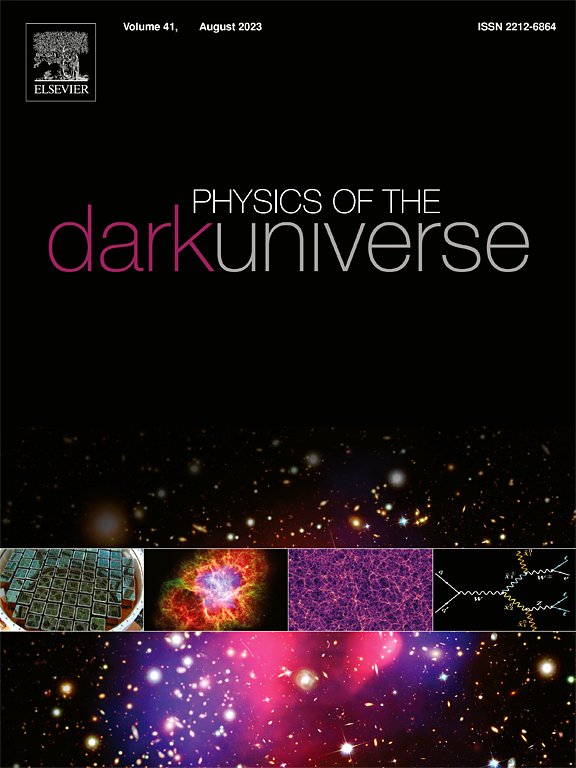裸奇点附近的高能粒子碰撞
IF 6.4
2区 物理与天体物理
Q1 ASTRONOMY & ASTROPHYSICS
引用次数: 0
摘要
在本文中,我们研究了Joshi-Malafarina-Narayan (JMN-1)裸奇点时空中的粒子加速和高能碰撞,在没有事件视界的情况下,在特定的角动量条件下,粒子可以返回。然后,这些流出的粒子可以与流入的粒子碰撞,使JMN-1奇点时空成为一个天然的高能粒子加速器。我们推导出计算两个碰撞粒子质心能量的必要表达式,并发现该能量可以达到极高的值,甚至可能接近普朗克能量尺度。如果自然界中存在无水平的致密物体,这些高能碰撞可能会对周围的物理过程产生重大影响,并可能产生不同的观测特征。我们还讨论了在JMN-1裸奇点附近的高能粒子碰撞是否会在阴影区域内产生光球或冲击波等现象。本文章由计算机程序翻译,如有差异,请以英文原文为准。
High energy particle collisions in the vicinity of naked singularity
In this paper, we investigate particle acceleration and high-energy collisions in the Joshi–Malafarina–Narayan (JMN-1) naked singularity spacetime, which, in the absence of an event horizon, allows infalling particles to turn back under specific angular momentum conditions. These outgoing particles can then collide with infalling particles, enabling the JMN-1 singularity spacetime to act as a natural high-energy particle accelerator. We derive the necessary expressions to compute the center-of-mass energy of two colliding particles and find that this energy can reach extremely high values, potentially even approaching Planck energy scales. If horizonless compact objects exist in nature, these high-energy collisions could substantially influence the surrounding physical processes and might give rise to distinct observational signatures. We also discuss whether phenomena such as a photosphere or shock waves could develop within the shadow region of the JMN-1 naked singularity as a result of high-energy particle collisions near the singularity.
求助全文
通过发布文献求助,成功后即可免费获取论文全文。
去求助
来源期刊

Physics of the Dark Universe
ASTRONOMY & ASTROPHYSICS-
CiteScore
9.60
自引率
7.30%
发文量
118
审稿时长
61 days
期刊介绍:
Physics of the Dark Universe is an innovative online-only journal that offers rapid publication of peer-reviewed, original research articles considered of high scientific impact.
The journal is focused on the understanding of Dark Matter, Dark Energy, Early Universe, gravitational waves and neutrinos, covering all theoretical, experimental and phenomenological aspects.
 求助内容:
求助内容: 应助结果提醒方式:
应助结果提醒方式:


